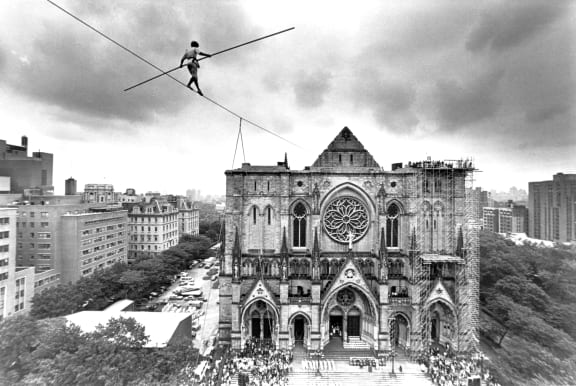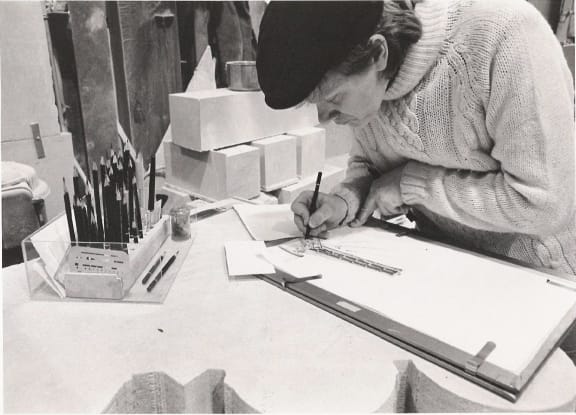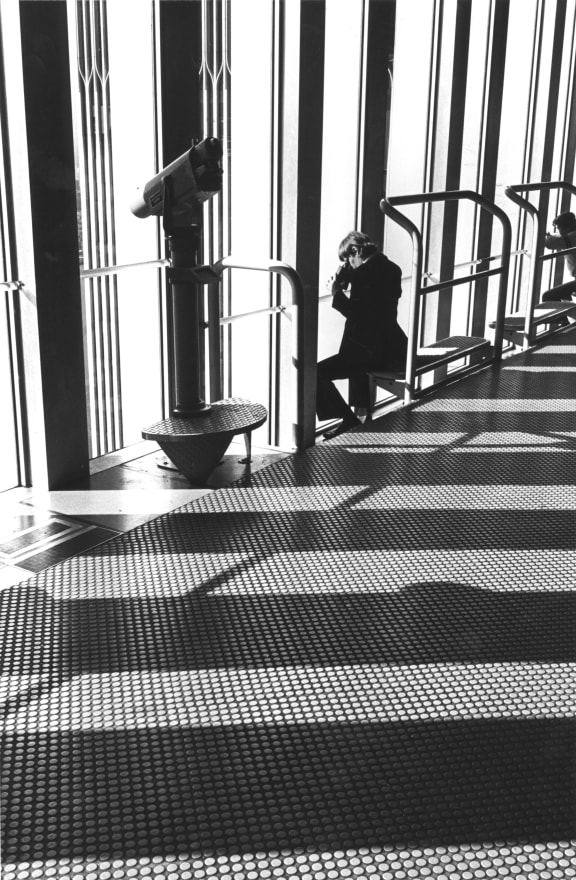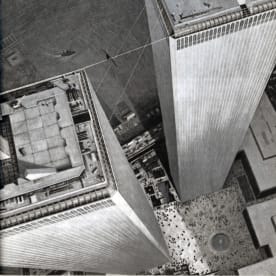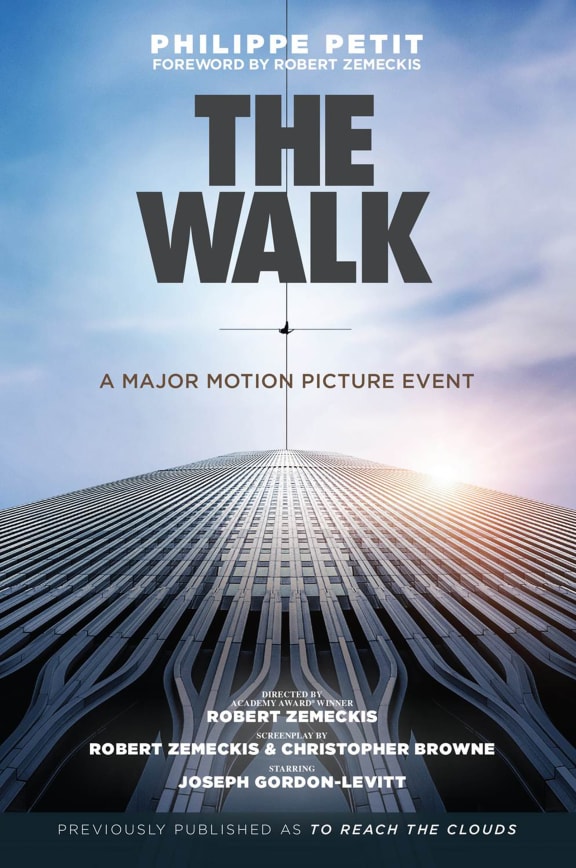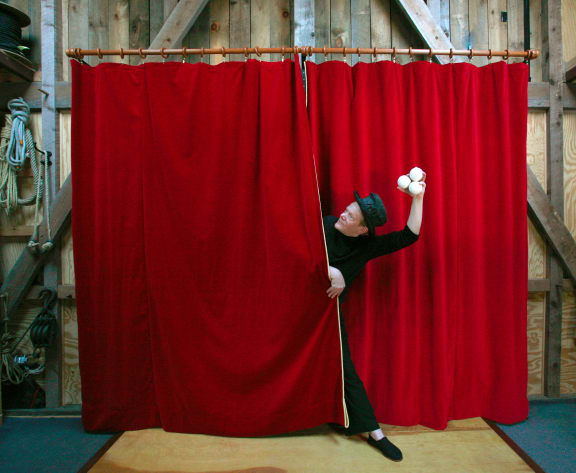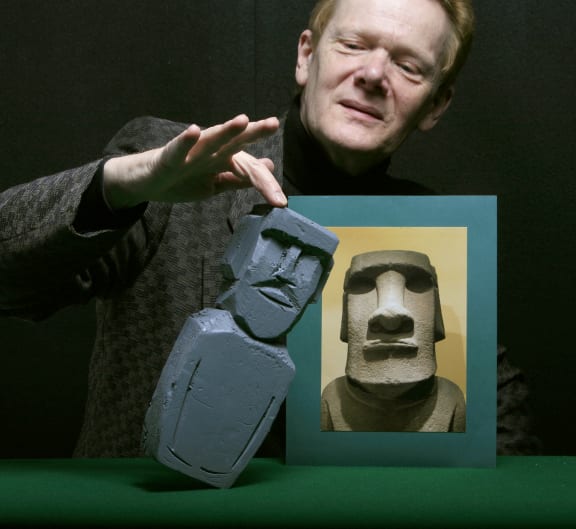Walking an illegal tightrope between the world's tallest towers might sound unthinkable, but Frenchman Philippe Petit has made a career out of 'cheating the impossible'.
Forty-one years ago, Petit walked an illegally-rigged cable that he and his friends had strung between New York's Twin Towers and crossed the space between them eight times over the course of an hour. That 1974 act is the subject of a new Hollywood film, The Walk, which is in cinemas now.
The Twin Towers daredevil has performed nearly 100 high-wire feats in total, and is also a poet, a magician, a street juggler and author. His current project is the Rapa Nui Walk, where he plans to walk on an inclined cable set on Easter Island in homage to the Rapa Nui and their giant stone statues.
Speaking to Nine To Noon this morning, Petit said that it would be "totally impossible" to do a stunt similar to his Twin Towers effort in a major city in the 21st century, but added bad odds had never stopped him before.
"I think everything is possible. Generally speaking, this type of thing would not happen in a big city in the 21st century, yet it is still possible to do the impossible, I am still an advocate of that."
Listen to Kathryn Ryan's interview with Philippe Petit here:
Petit said there were no universal recipes for overcoming a seemingly impossible task, but he was able to "cheat the impossible".
"Basically, the impossible is something that is too big for little human beings, so if we look at a giant wall of granite in front of us, most of us would not be able to attack that wall, they would turn around and be defeated. But if you realise this wall of stone is composed of little grains of sand, you can start digging. So if you take an immense task and if you go one small step at a time, then you forget the immensity of the whole task, and then you go forward, you slowly inch your way through the impossible task."
He said this attitude was something that should be taught in schools.
"We are told to behave and follow the multitude, but we should be encouraged to follow our own calling to shape our destiny. Not to try something twice and say 'oh no, I can't do it', but to keep working on something, because there is always a way to be victorious."
Slowly working through an impossible task might sound easy enough, but it is a different situation when you step out on a wire 415m high, with any failure inevitably leading to certain death.
Despite the danger, Petit said he could only have positive thoughts in his head when he took his first steps out onto the wire.
"This is the price of my survival on the wire. If I were to put my first foot out with doubt in my heart, with trembling in my feet and hands, with question marks all around me, I should not do that step. I should run away and recompose myself. Fear has no room for me on that wire, only majesty and happiness and joie de vivre"
After thousands of hours of practice on the wire, Petit said walking it became deceptively simple, because it was as natural as breathing.
"We naturally breath, and these natural things are not complex, although they can be studied and the actual mechanism and system of walking could be complex. But it has a naturalness that appeals to everybody, except when you look at people on the street, almost nobody knows how to walk, they move their feet in a strange way, not walking fluidly.
"But it's also the most difficult thing in the world, maybe because of its natural simplicity. You have to feel how the cable breathes, you have to breathe in unison with the cable, which I learned from thousands of hours of practising on the wire."
Forty years after the Twin Towers walk, Petit's story has been told in books and documentaries, with Joseph Gordon-Levitt playing him in the new movie. Petit said the latest adaption generally got the details right, even if the filmmakers felt the need to add a few more tiny dramatic moments to his walk.
Petit told Nine to Noon that his plan his walk between the towers began long before they were completed, with his imagination sparked by the first plans for the buildings. But it wasn't the height of the newly-built towers that saw him take on the challenge.
"It was nice that they were the highest towers in the world at that time, but I was actually attracted by the negative space that the Twin Towers were creating in the void. And by venturing into another world of cloud and birds, and to me they were magnificent because of their simplicity and their height, and I got to know them very well as I was preparing my walk."
